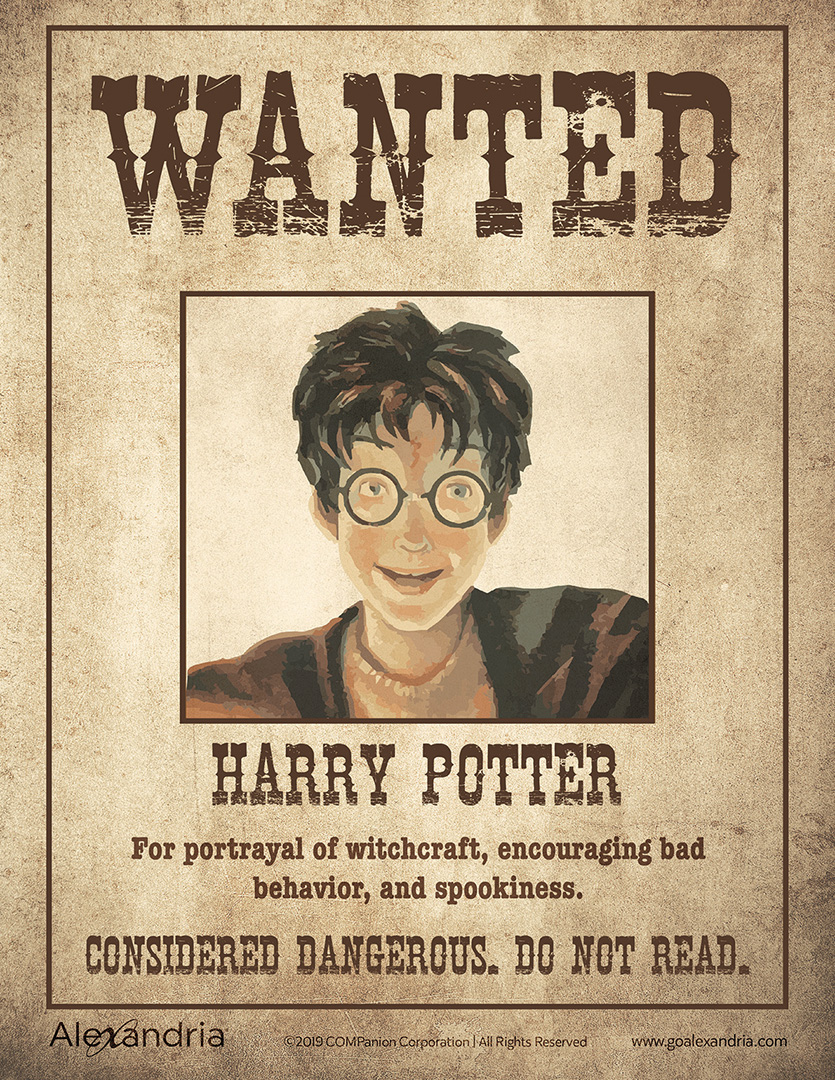These are the two artifacts I will be examining in the essay:

(sourced from https://www.goalexandria.com/banned-books-wanted-posters/)

(sourced from, among many other references, https://www.myconfinedspace.com/2009/12/08/the-comics-code-authority/)
Below is the outline:
- Intro paragraph
- Historical context
- Since I dived into the history of banned books pretty extensively during my speech, this space may summarize or hearken back to that briefly but ultimately focus on the background/history of a sister topic: comicbook censorship, and its connection to the Comics Code Authority (CCA).
- Should this space be where I put the material of Middle 1 (background of comicbook censorship and CCA)? It could fit here, but it could also serve as a talking point in the main essay body to examine the rhetorical tool of kairos/exigence. Maybe I could put a brief historical overview here and then have a body paragraph dedicated to how that historical context connects and enhances the artifacts’ meanings? Is it worth spending that extra space for this?
- Thesis:
- Drawing upon Schudson’s ideas and the exigence of differing views on media suppression at the time, the newer Harry Potter wanted poster and the older Code-Approved picture demonstrate the varying aspects of each time period’s ideologies and commonplaces in order to illuminate and encourage particular views of censorship.
- Historical context
- Transition from intro to main body
- Subsequent/supporting/middle/body paragraphs
- Middle 1 (should this go here or in the historical context for the intro, or both?): more detailed background on comicbook censorship, especially regarding the CCA
- Kairos/Exigence for COMICS (past/outdated; also future me, make sure to cite sources here): People (mainly parents) had begun to notice an abundance of violence and “inappropriate” activities in comics on shelves, and were not happy about it. Lots of them expressed their displeasure, and before long that sentiment made it all the way to the newspaper. This concern gained attention across the nation. In the middle of the twentieth century, the newly formed CCA provided another (non-government) option for comicbook regulation, enforcing strict rules (for the children) about what creators could and could not have in their works. Many major comicbook companies (Marvel, DC, Archie, etc.) adhered to this code, submitting their comicbook issues for review prior to publishing. If the material was not suitable in the eyes of the CCA, they would reject the material and send it back for revision. If the issue did not carry the CCA seal of approval, many distributors/sellers would refuse to carry them for the wider public to purchase. Largely based off of a film code regulation, the rules for comics generally accepted nothing more than a “G” rating, without a “good criminal” or “gory scene” or “sexual abnormality” in sight.
- Kairos/Exigence for BOOKS (yearly/ongoing): banned books week (once a year towards the end of September), a widespread event that focuses on informing and highlighting censorship and its repercussions from decades past until present, and how everyday people can pave the way for a better and more welcoming/open/accessible future
- Middle 2(+): Schudson’s Structured Attention, time-based variance of ideologies and/or commonplaces
- Ideology:
- For BOOKS (more recent):
- Dominant/Emerging: there shouldn’t be books/materials that are banned/challenged because accessibility and free expression for all is important, even (and especially) for the uncomfortable topics
- Residual: there should be books/materials that are banned/challenged because some things are just too horrible or unpleasant or unimportant to talk about, even (and especially) with younger children
- For COMICS (more in the past, basically the opposite of above):
- Dominant: there should be books/materials that are banned/challenged because some things are just too horrible or unpleasant or unimportant to talk about, even (and especially) with younger children
- Emerging: there shouldn’t be books/materials that are banned/challenged because accessibility and free expression for all is important, even (and especially) for the uncomfortable topics
- For BOOKS (more recent):
- Commonplace/Style:
- For BOOKS (this part is from my speech, so I might reword it so it doesn’t sound like I’m saying the same things over again and instead will be comparing/contrasting it with CCA): Irony of “outdated” within the commonplace: wanted posters display undesirable and perhaps outlawed subjects; we don’t commonly use wanted posters any more, so the “Alexandria” company is stating that we shouldn’t remain complacent in censorship any longer either — instead, we should celebrate our right and freedom to express and have access to any and all information and media
- For COMICS: it’s almost opposite in mindset. The eye-catching red and smiling children frame censorship as a (falsely) benign and (needlessly) necessary facet of artistic and personal expression in comicbooks.
- Schudson: mainly Structured Attention with a little bit of Everyday Life
- This is just an extra little point to mention if there’s space. It’s definitely a factor in both of these artifacts, though may not have as much to discuss or expound upon as the previous two factors.
- Ideology:
- Middle 1 (should this go here or in the historical context for the intro, or both?): more detailed background on comicbook censorship, especially regarding the CCA
- Transition from main body to conclusion
- Concluding paragraph
- Short- or long-term impact of subjects’ message(s) (on audience, cultures, etc.): censorship is yikes, so do engage with media but perhaps do so critically
- Works cited (separate page): Don’t forget to cite sources used throughout the essay as a separate works cited (MLA) as the last page!